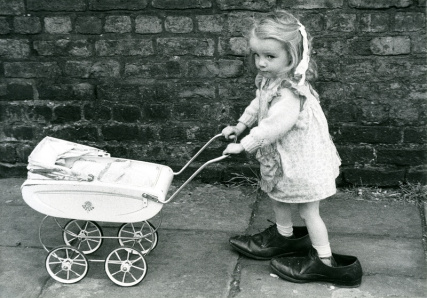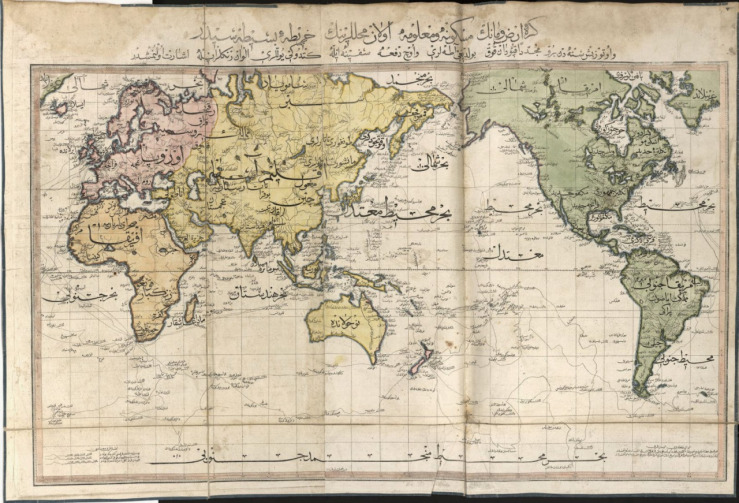on the eighth day of Christmas my true love gave to me.
some grapes that made choke suddenly…………

So here it is. One of the biggest fears of any parent is what to do if your child chokes……weaning is one of the hardest things any parent goes through (alongside those sleepless nights), not only for the fact that most of the food ends up on the wall but for that one major fear, is it small enough? Did I break it down enough? Not to mention all those toys we have with perfect mouth sized pieces. All of this and more will be enough to give any of us nightmares
Now for a bit of harsh reality……. Choking is the third most common cause of infant death in the UK, after road traffic accidents and house fires — killing an average of 24 under-fives a year in England and Wales.
Approximately half the population doesn’t know what to do if someone chokes. This is more worrying when you realise that when it does happen, you must act quickly — you have three to four minutes before death can occur.
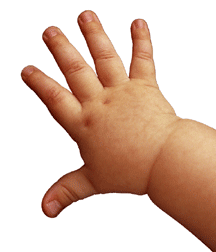
Let’s look at the anatomy and reasons children choke so easily. The diameter of a child’s airway is approximately the diameter of their little finger……small isn’t it? Does that surprise you?

How do we recognise someone is choking?
If an adult or small child is choking you may see one or all of these behaviours.
Coughing or gagging
Hand signals and panic (sometimes pointing to the throat)
Sudden inability to talk
Panicked look in eyes.
Clutching the throat: The natural response to choking is to grab the throat with one or both hands. This is the universal choking sign and a way of telling people around you that you are choking.
Wheezing
Passing out
Turning blue: Cyanosis , a blue colouring to the skin, can be seen earliest around the face, lips, and fingernail beds. You may see this, but other critical choking signs would appear first.
INFANTS
If an infant is choking, more attention must be paid to an infant’s behavior. They cannot be taught the universal choking sign.
Difficulty breathing
Weak cry, weak cough, or Wheezing
Passing out
Turning blue: Cyanosis, a blue coloring to the skin, can be seen earliest around the face, lips, and fingernail beds. You may see this, but other critical choking signs would appear first.
WHAT TO DO? – ACT FAST
 Mild choking: encourage them to cough. If the airway is only partly blocked, the person will usually be able to speak, cry, cough or breathe. They will usually be able to clear the blockage themselves.
Mild choking: encourage them to cough. If the airway is only partly blocked, the person will usually be able to speak, cry, cough or breathe. They will usually be able to clear the blockage themselves.
Don’t put your fingers in their mouth to help them as they may bite you accidentally.
Severe choking (complete blockage)
back blows and abdominal thrusts
Where choking is severe, the person will not be able to speak, cry, cough or breathe. Without help, they will eventually become unconscious.

To help an adult or child over one year old:
Stand behind the person and slightly to one side. Support their chest with one hand. Lean the person forward so that the object blocking their airway will come out of their mouth, rather than moving further down.
Give up to five sharp blows between the person’s shoulder blades with the heel of your hand. (The heel is between the palm of your hand and your wrist). Check if the blockage has cleared.
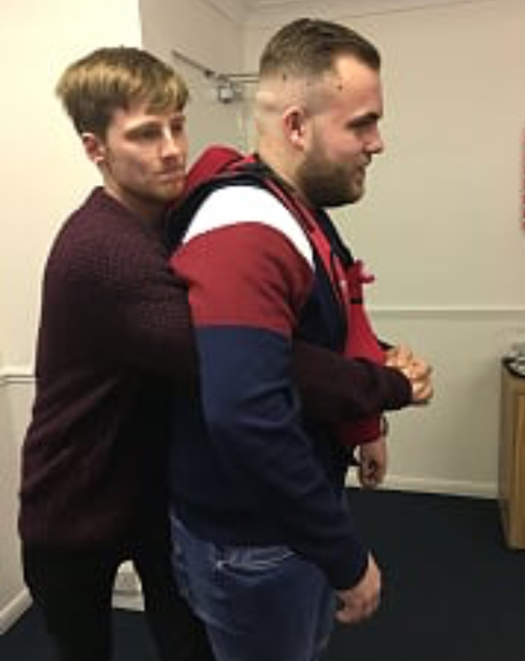
If not, give up to five abdominal thrusts.
Important: Don’t give abdominal thrusts to babies under one year old or to pregnant women
Stand behind the person who is choking.
Place your arms around their waist and bend them forward.
Clench one fist and place it right above their belly button.
Put the other hand on top of your fist and pull sharply inwards and upwards.
Repeat this movement up to five times. Checking between each attempt to see if the blockage has cleared.
If the person’s airway is still blocked after trying back blows and abdominal thrusts, get help immediately:
Call 999 and ask for an ambulance. Tell the 999 operator that the person is choking.
Continue with the cycles of five back blows and five abdominal thrusts until help arrives.
If the person loses consciousness and they’re not breathing, you should begin cardio-pulmonary resuscitation (CPR) with chest compressions at a rate of 30 chest compressions to 2 rescue breaths.
Infants under 1 year

Back blows for babies under one year
Sit down and lay your baby face down along your thighs, supporting their head with your hand.
Give up to five sharp back blows (checking between each one) with the heel of one hand in the middle of the back between the shoulder blades.
Back blows for children over one year
Lay a small child face down on your lap as you would a baby.
If this isn’t possible, support your child in a forward-leaning position and give five back blows from behind.
If back blows don’t relieve the choking and your baby or child is still conscious, give chest thrusts to infants under one year or abdominal thrusts to children over one year. This will create an artificial cough, increasing pressure in the chest and helping to dislodge the object.

Chest thrusts for children under one year instead of abdominal thrusts
Lay your baby face up along the length of your thighs.
Find the breastbone, and place two fingers in the middle.
Give five sharp chest thrusts (pushes), compressing the chest by about a third. Check between each thrust to see if the blockage has cleared.
If the obstruction has not cleared ring 999 and tell the operator the child is choking, continue until help arrives. If the child goes unconscious start CPR IMMEDIATELY. Five rescue breaths initially then 30 chest compressions to 2 rescue breaths.
Simple things we can all do will help avoid choking as is reasonably possible. This may sound like common sense and I can only apologise.
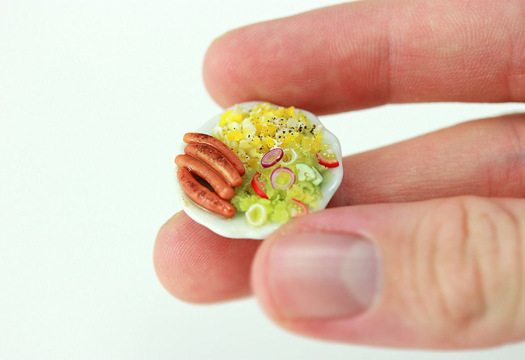
1. Cut food up into small pieces for small children. (Mash them up for ones younger than 2).
A big cause of choking is over confidence in a child’s ability to eat, Up to approximately the age of five children are still learning to chew. So even if they seem to be confident eaters it doesn’t hurt to be careful.
2. Watch them eating.
Children can be distracted easily whilst eating and not chew properly and suddenly swallow. Whilst the ability is there to eat it is still an infantile skill so can easily get stuck.
3. Avoid allowing them to eat whilst running around or in the car seat.
Here are some foods to be cautious of or even avoid in children younger than 4.
Hot dogs
Nuts and seeds
Chunks of meat or cheese
Whole grapes
Hard or sticky candy
Popcorn
Chunks of peanut butter
Chunks of raw vegetables
Chewing gum (obvious but common)
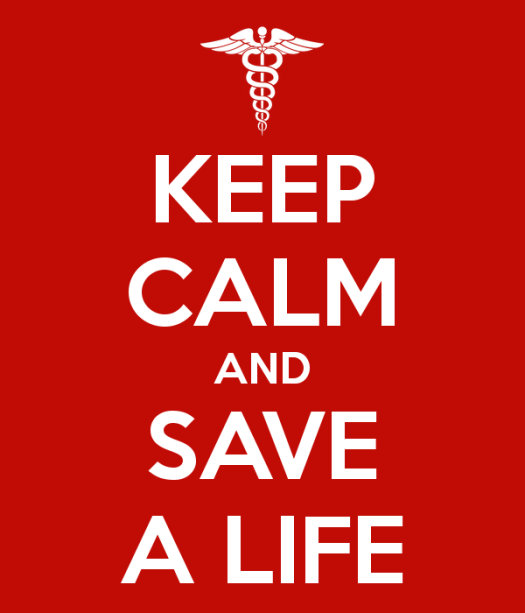
I can tell you from personal experience with my own children and the incidents I have dealt with it IS scary. The most important thing is to be confident in your ability to help. Know exactly what to do and when to call for help.
Be safe people……….



